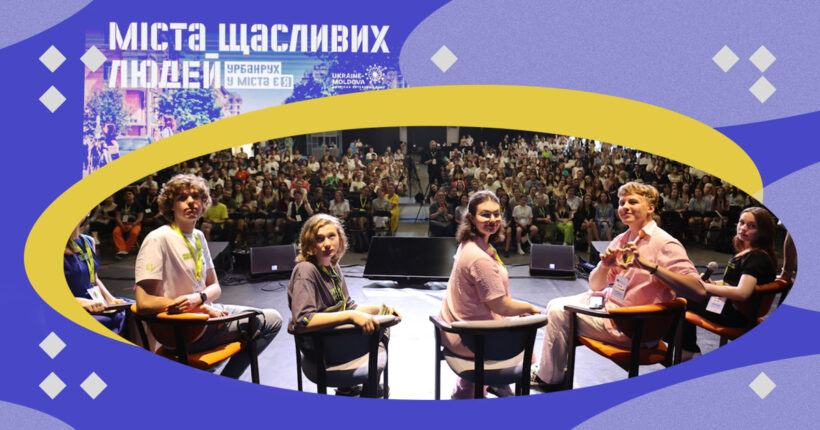
What is the problem?
Ukrainian cities are far from being child-friendly. The lack of convenient infrastructure, unsafe streets, and an overall uncomfortable environment make the cities unsuitable for children and teenagers. Urban planning largely ignores their needs.
What is the solution?
However, the situation may start to change with a new approach. This summer, as part of the urban movement "City Is Me," an online survey called "Cities of Happy People" was conducted in Ukraine, targeting children and teenagers. The goal was to study and analyze the needs of young people in cities, so that these insights can be incorporated into future local programs and policies.
"There is a gap between the needs of young people in cities and the creation of an environment that fosters their development. At the same time, authorities face a shortage of human capital, and involving young residents in shaping the vision for urban development and decision-making could serve as an additional resource. This would make communities more inclusive and attractive to live in," says Iryna Ozymok, founder of the "City Is Me" movement, author of a book by the same name, and director of the local economic development program of the Ukraine-Moldova American Enterprise Fund (UMAEF).
How does it work?
What the study showed
The urban movement "City Is Me" is an educational project offering extracurricular activities for children and youth, focused on cities, communities, and the role of residents in decision-making. In the summer of 2024, the organization conducted the "City of Happy People" online survey among young people aged 10-17 living in Ukrainian cities or communities. The survey gathered 1,800 responses from across Ukraine, and the results were compiled into a study.
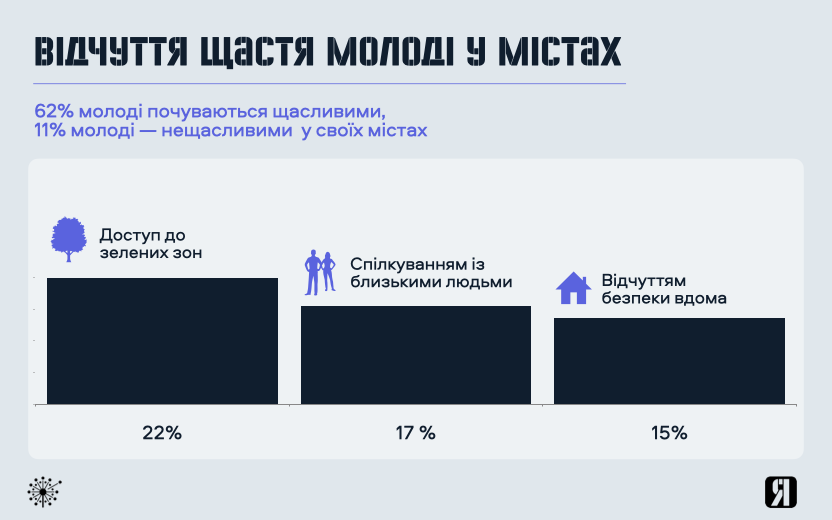
From the "City of Happy People" study infographic.
The study revealed that the majority (62%) of Ukrainian youth aged 10-17 feel happy living in their city or community. Their happiness is often linked to spending time with family, whether at home, in parks, or in other recreational areas.
However, young people also face significant challenges in their cities. The survey highlighted issues such as a lack of recreational spaces (mentioned by 27% of respondents), insufficient green areas (25%), unsafe streets (21%), traffic congestion (19%), chaotic construction, and a shortage of cultural events.

From the "City of Happy People" study infographic.
At the same time, one in ten respondents does not feel happy, and only 3% are completely satisfied with the current state of their city.
"These figures are particularly concerning. This is a significant statistic that cannot be overlooked, and the number of such teenagers may be even higher since not everyone feels comfortable sharing their feelings openly," says Sofiia Denysiuk, coordinator of the urban movement.
Another alarming finding is that many children and teenagers do not feel at home in their cities. According to the urban movement, this issue is closely linked to forced migration due to the war, loss of social connections, and the shift to online education. Among those who had to move to a new city, nearly half are still in the process of adjusting or feel no sense of belonging at all—22% are still adapting, while 26% do not feel connected to their new city.
Additionally, young people often feel their needs and interests are overlooked by authorities and older generations, which further increases their sense of isolation and feeling undervalued in society.
All of these factors negatively impact young people's sense of belonging in their urban environments. The organization acknowledges this as a serious concern, emphasizing the need to openly address these challenges in order to find solutions and help youth adapt to the new realities they face.
What can be done?
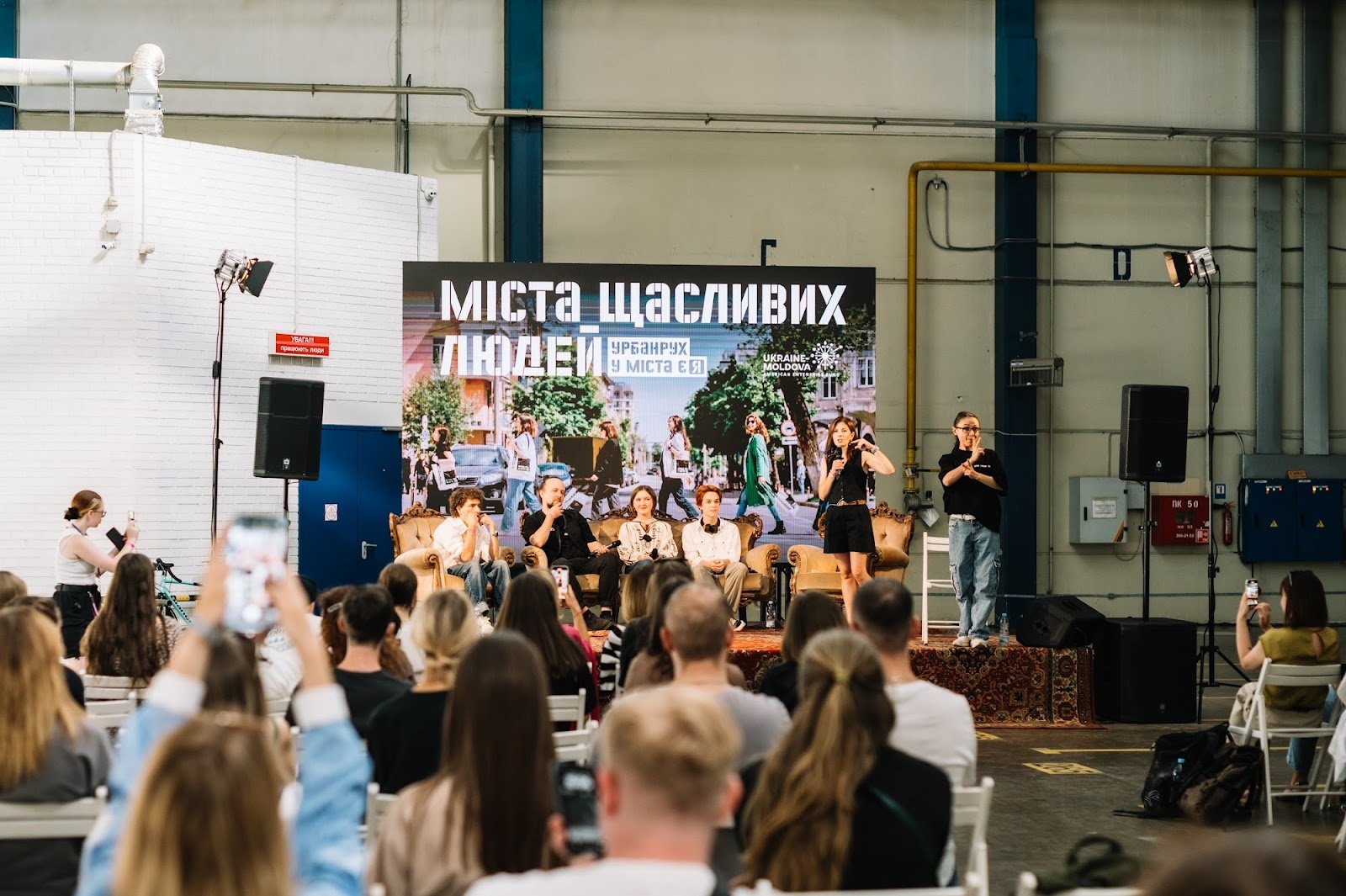
Presentation of survey results at the Kurazh charity event. Photo courtesy of the urban movement "City is Me"
To encourage greater involvement of young people in city life, teenagers suggest creating more spaces for communication and meetings, as well as establishing stronger interaction with city authorities to participate more actively in shaping their communities.
Although young people want to see the impact of their actions and influence change, they often face challenges such as insufficient information and a lack of communication channels. In fact, 37% said they are hesitant to discuss such topics with adults, as they feel their ideas are dismissed as too childish and not worth implementing. Most of the respondents (59%) feel their influence on their city is low, estimating it between 0-40%.
"We were especially disheartened by the words of children who were sure they couldn't make any changes. It's extremely sad to see this pain and sense of powerlessness," says Kateryna Yerska, the program's communicator. "If a teenager took the time to complete such a large survey to express their thoughts, it shows they are capable of much more. They just don't know where to turn or how to act."
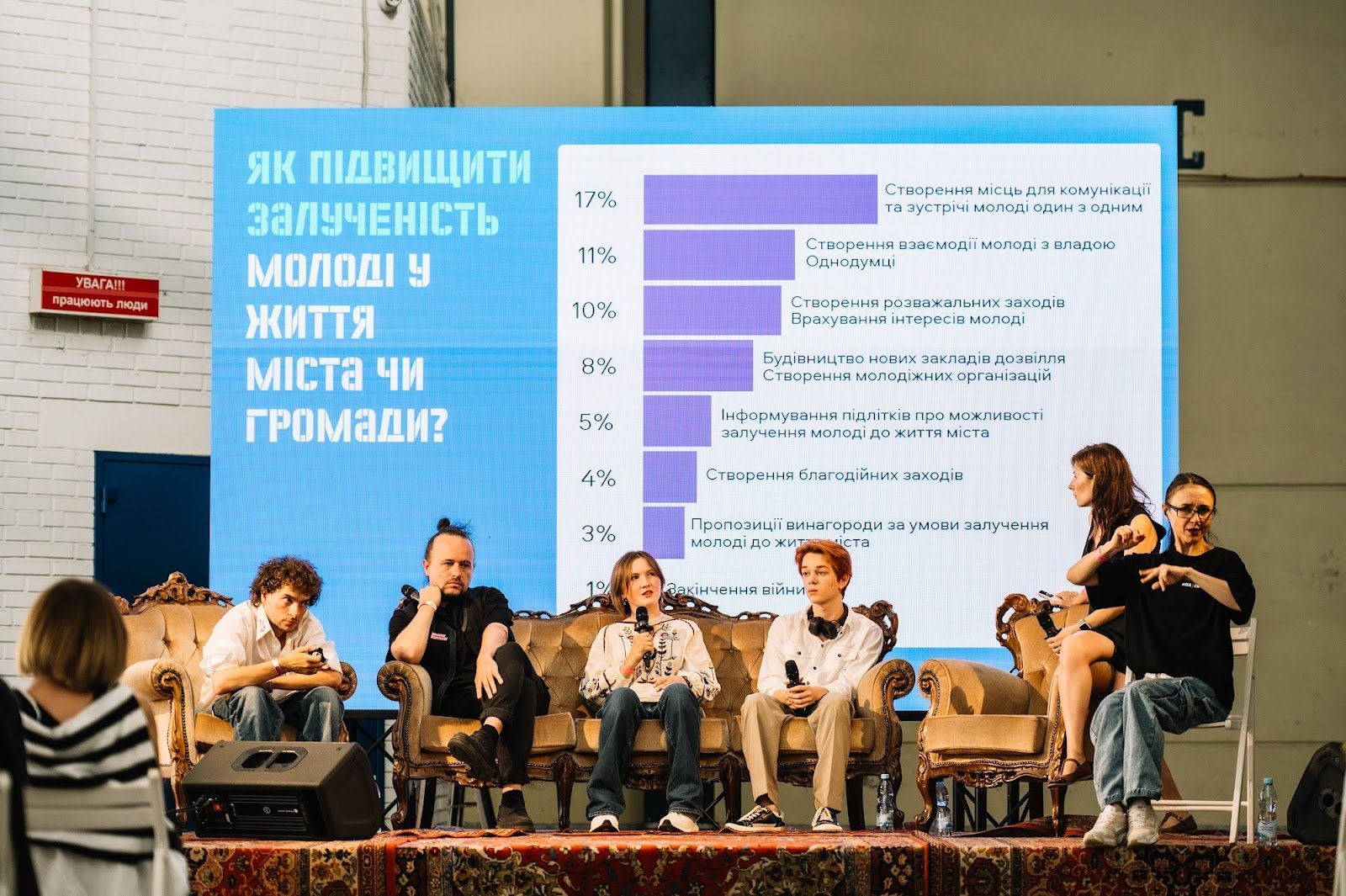
Iryna Ozymok moderates panel at the Lviv Urban Forum. Photo courtesy of the urban movement "City is Me"
The "City of Happy People" study could be a significant step in ensuring that young people are heard and involved in creating cities that are safe and comfortable for everyone.
The urban movement representatives urge those responsible for urban spaces—authorities, local governments, businesses, urban planners, and activists—to review the study and its findings.
"We believe this research can influence decision-making in communities. However, it's important to understand that simply expressing dissatisfaction or criticizing is not enough. We aim to educate young people to not only voice their concerns but also actively participate in driving change. This applies to adults as well. In our traditional culture, people often shift responsibility to the government or other institutions, but we believe that every citizen holds responsibility for making improvements in cities.
We also recognize that young people may not always be able to clearly articulate what they dislike about their urban environment or how they want it to change. That's why we teach them to analyze urban processes, understand their connections, and most importantly, find ways to influence them. This doesn't mean teenagers will design urban spaces themselves, but our goal is to raise awareness and nurture a generation of informed, engaged citizens," says coordinator of the urban movement.
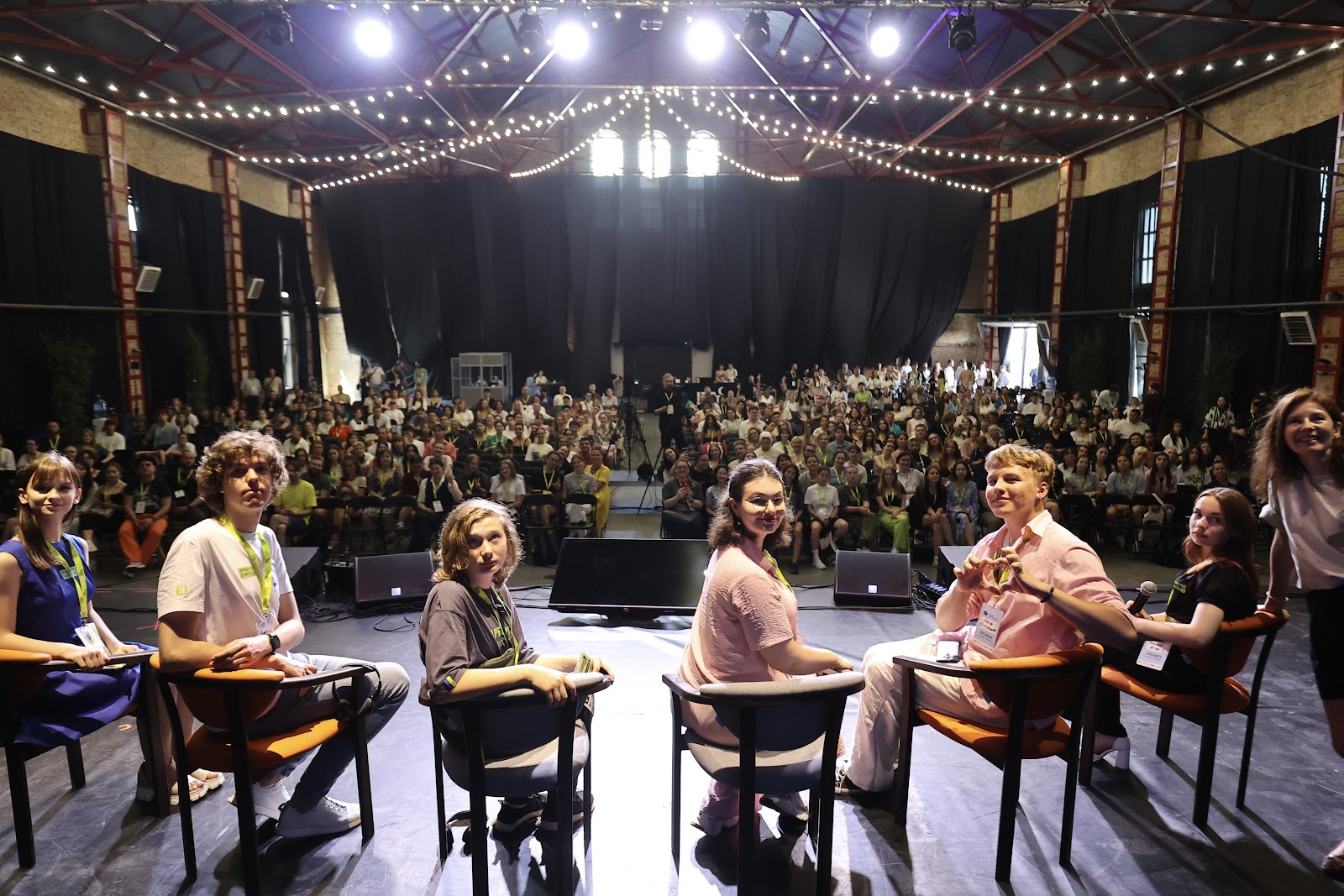
Teenagers participate in the discussion panel at the Lviv Urban Forum. Photo courtesy of the urban movement "City is Me"
The urban movement "City is Me" plays a crucial role in amplifying youth voices in urban development discussions. One notable instance was during the Lviv Urban Forum, where they presented the initial findings of their research. The panel, moderated by Ozymok, featured only one adult among participants, with the rest being children and teenagers from various cities across Ukraine. This youth-led discussion was part of the forum's official program, on equal footing with other panels involving mayors and city experts from Europe and Ukraine. In a hall seating a thousand people, the audience attentively listened as teenagers shared their perspectives on the challenges facing their cities, highlighting the importance of youth input in urban planning.
Similarly, during the Kurazh charity festival in Kyiv, "City is Me" organized a lecture-discussion involving two teenagers. The event delved into the survey results and tackled a pressing issue: how to amplify the voices of young people in societal discussions.

Kurazh charity festival. Photo courtesy of the urban movement "City is Me"
Does it really work?
Ozymok emphasizes that, in the context of the nearly three-year war of Russia against Ukraine, the long-term decline in education quality due to military actions, and the high rate of emigration, cities and communities must focus on preserving—and ideally increasing—human capital. The youth who remain in Ukraine need an environment that supports their self-development, education, leisure, and involvement in the country's progress. "This is what gives a sense of the future," Ozymok asserts.
While surveys, numbers, and statistics provide an overview of the situation, they don't offer specific solutions. To truly address the challenges young people face, it's crucial to foster open communication and involve them directly in decision-making processes. This goes beyond simply inviting children and teenagers to meetings or panels. It requires creating sustainable mechanisms for ongoing dialogue between youth and urban planners. One effective method is through participatory urbanism, where residents take part in shaping urban projects. It's essential that young people not only feel heard but also recognize their role in influencing key decisions.






